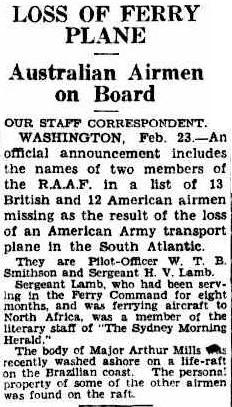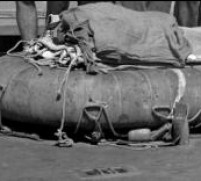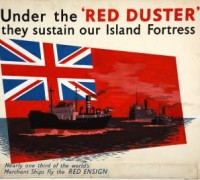SURVIVORS ADRIFT IN SOUTH ATLANTIC * - SURVIVORS
2)WASHED ASHORE *
https://www.youtube.com/watch?v=y8foFE850xs
In the footage archival above, the common saga thousands of survivors of merchant ships from several nations which were rescued in the south atlantic or made ashore on the vastness of Brazilian and African coast.
A SAD ARRIVAL OF A STRANGER AT PONTA NEGRA BEACH, NATAL
Years ago, when I never dreamed of writing books about history, I met Clovis Ramalho Ribeiro Dantas, father of our great friend, the economist Vivianne Fernandes Ribeiro Dantas, then a competent official of the Regional Labor Court Natal.
Mr. Clovis, as I called him, was retired from the old BANDERN, the State Bank, a serious man, worker, Mason, quiet and liked to tell stories of the day in World War II. He always spoke of his sufferings as one of "beachy" as they were called combatants coastline. Narrated on the patrols, the lack of what to do, spent all day staring at the sea, watching the night patrols and day to day of this function. But one day something appeared on the horizon and everything was different and busy.
Mr Clovis narrated that was the "beginning of the year 43 in January," he was on patrol in the area of Ponta Negra, in the area near the current Coastal Way, a region of our coastline and deserted at the time, but currently focuses sumptuous hotels receiving thousands of tourists visiting Natal.
According to him, his friend who was also military, which was the first to spot the small lifeboat. For this person, who called their attention was various sea birds was circling about a point in the sea and then he noticed the small lifeboat. Soon someone, or even the tide brought the boat to shore and several Brazilian patrolmen were attracted. Mr. Clovis was among them.
What caught his attention, even while he was walking some distance from the raft, was the smell of rotting flesh. Inside the lifeboat was the reason, there was a human body in a state of putrefaction. He was a man, an Officer dressed in U.S. Army uniform. The body was very dehydrated, badly burned, with several wounds on the skin caused by the sun and birds, their heads hanging on the edge of the raft, and what most caught the attention of Mr. Clovis, the lips of the deceased opening and grotesquely showing the teeth, due to the action of the sun.
At the time he told me that He barely could stand all that horrible scene, but many colleagues broke down before the picture in vomit. Others made the sign of the cross and prayed for the souls of the dead. It was the war that, even without going directly to Natal, was sending a clear message saying there were signs of a tragedy in the Atlantic.
Another thing that caught attention of the young Brazilian soldier was a small pouch that the U.S. officer had tied to him. A sergeant opened to verify the contents and found, according to Mr. Clovis, several "platelets, those who had names." He was talking about the famous nameplates, involved in several armies during the Second World War.
Used primarily to identify the bearer in case of death or injury, the platelets also served as a source of medical information for treatment, always bringing the blood type and other data. The Americans called this material "Dog Tag" because of its similarity with the plates placed in collars, used to identify dogs.
Soon several U.S. miltary reached the shore. They were officers and soldiers, who rolled the body, what was searched, photographed, took notes, sought information from the patrol through interpreters. All without a lot of talk, without crying, silent and reserved. Soon the U.S. military took the corpse, the bag with the platelets, the raft, put all in a vehicle and left.
The citizen of Natal, Clovis Ramalho Ribeiro Dantas never forget this day, neither this fact. But until his death in 2008, never knew who was the American on the raft. I thought that the occupant of the boat was the victim of a submarine, which sank one ship and never knew his name, He said.
Below the clipping from two American newspapers with details of the identity of the US Army Major Arthur Mills.


Source: www.tokdehistoria.wordpress.com


